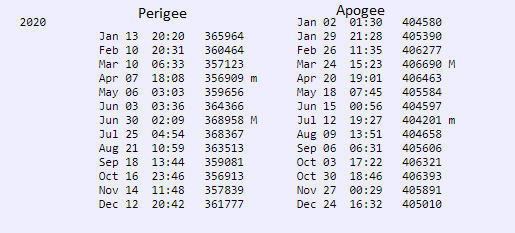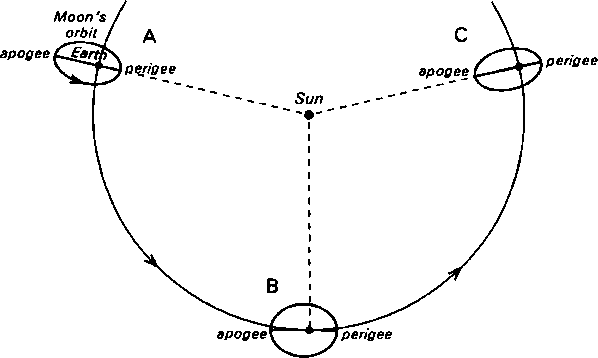
The most distant quarter moon of the year falls on July 12, 2020. That’s because this quarter moon more closely aligns with lunar apogee – the moon’s farthest point from Earth in its monthly orbit – than does any other quarter moon in 2020.
Moon at apogee: July 12, 2020, at 19:27 UTC (Universal Time)
Last quarter moon: July 12, 2020, at at 23:29 UTC

Although the year’s most distant quarter moon falls on July 12, the lunar apogee accompanying this quarter moon counts as the year’s closest lunar apogee. Of this year’s 14 lunar apogees, the one on July 12, 2020, is the closest of them all. See the table below via AstroPixels.

It’s no coincidence that the year’s closest lunar apogee happens in close conjunction with the quarter moon. A lunar apogee that closely aligns with a quarter moon is closer than the mean apogee distance of 251,969 miles or 405,504 km. On the other hand, a lunar apogee that closely aligns with the new moon or full moon is farther than the mean apogee distance of 251,969 miles or 405,504 km.
Neil Degrasse Tyson, in an interview, once claimed, “The distance to the moon – okay, the moon orbits us. It’s sometimes closer and it’s sometimes farther away. It has nothing to do with the phase.”
On the contrary, a quarter moon at apogee doesn’t swing as far from Earth as a new or full moon at apogee; conversely, a quarter moon at perigee doesn’t sweep as close to Earth as a new or full moon at perigee. In other words, a quarter moon can never get as close to Earth as a supermoon (new or full moon near perigee) or as far away as a micro-moon (new or full moon near apogee).

For those brave souls wanting to know why quarter moons at apogee/perigee don’t go out as far – or come in as close – as new and full moons at apogee or perigee, we provide an explanation below.

Want to know when the closest lunar apogee will happen in 2021? There’s a lunar cycle whereby 14 lunar months (14 returns to last quarter moon) almost exactly equal 15 returns to apogee. A lunar month refers to the time period between successive returns to the same phase, a mean period of 29.53059 days. An anomalistic month refers to successive returns to apogee (or successive returns to perigee), a mean period of 27.55455 days. Hence:
14 lunar months (14 returns to last quarter moon) x 29.53059 days = 413.428 days
15 anomalistic months (15 returns to lunar apogee) x 27.55455 days = 413.318 days
Therefore, the last quarter moon and lunar apogee will realign in a period of about 413 days (approximately one year, one month and 18 days). Next year, in 2021, the last quarter moon and lunar apogee will realign on August 30, 2021, to present 2021’s closest lunar apogee:
Lunar perigee: August 30, 2021, at 2:22 Universal Time
Last quarter: August 30, 2021, at 7:13 Universal Time


Bottom line: On July 12, 2020, we have the year’s most distant quarter moon, yet the year’s closest apogee. Then exactly 14 lunar months (14 returns to last quarter moon) later, 2021’s most distant quarter moon and closest apogee will recur on August 30, 2021.











